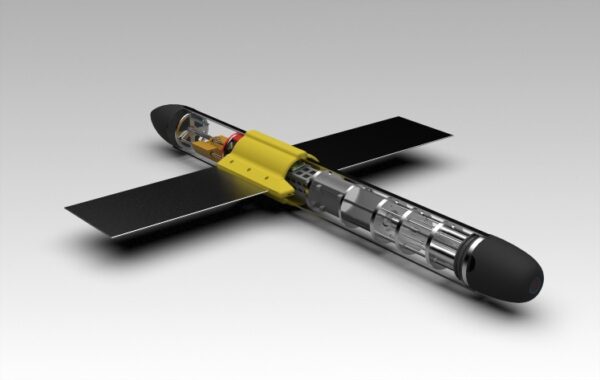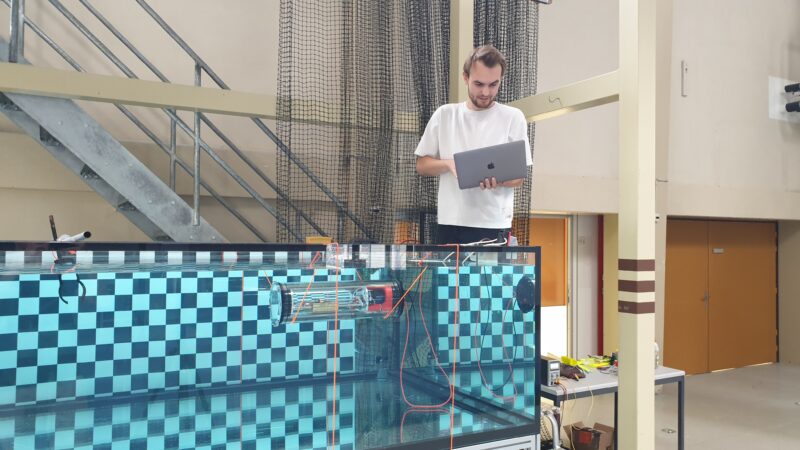The vision of NAUTILUS is to build an unmanned underwater vehicle (UUV) capable of exploring the subsurface oceans of icy moons in our solar system in search of extraterrestrial life. At the core of the vision is the idea that if we were to find alien life near Earth, it would very likely be found on one of these moons, such as Enceladus or Europa.
Many international organizations want to fly such a mission in 30-40 years, and the NAUTILUS project could realistically provide input and experience for planning these missions. Admittedly, the discussion of these missions sounds like a topic set in the distant future. But the rovers going to Mars today were also planned several decades ago. That’s why NAUTILUS is involved in researching and planning the next generation of space missions to search for extraterrestrial life. Since a former member of NAUTILUS has left to work on a very similar mission at NASA, the relevance of this project is obvious.

While the challenge of working on such a complex task seems already big enough for a student engineering team, NAUTILUS additionally decided to implement new principles in the field of robotics into the UUV design. In collaboration with researchers from the Swiss Federal Laboratories for Materials Testing and Research (EMPA), the field of soft robotics was chosen. Soft robotics have been shown to offer superior capabilities for gripping on land, but more importantly for propulsion underwater. Many of the standard propulsion methods such as propellers have always been inferior to natural methods of underwater navigation. Animals such as fish not only outperform a traditional inspection robot in range, but also achieve much greater maneuverability underwater.
Using soft silicone parts actuated by various methods, current robotics research is trying to mimic this behavior and create biomimetic robots. One of many good examples is the soft robotic fish SOFI, which was also recently presented in a TED Global Talk.
By implementing these new robotics principles, NAUTILUS also promotes research in the field of robotics. In collaboration with professors from ETH, Imperial College London (ICL) and EMPA, the NAUTILUS team is in the process of publishing research papers and increasing the presence of ARIS in academia. Currently, one paper is awaiting submission, while two others are still in progress. Since the papers have not yet been published, NAUTILUS cannot provide further details about the project’s soft robotics approach. However, in the future we will report on progress and publish the papers.
 With missions to icy moons still a long way off, the NAUTILUS team has also found an application for the UUV on Earth. Together with glaciologists and other environmental experts, NAUTILUS is modifying the current version of the UUV so that it can be equipped with sensor modules that collect data on climate change issues. The Arctic regions bear resemblance to an icy lunar surface and therefore represent a great region to deploy the UUV. Analyzing glacier movements to determine the extent and speed of Arctic ice melt or studying the currents responsible for global water circulation provide important clues about climate change and its impacts.
With missions to icy moons still a long way off, the NAUTILUS team has also found an application for the UUV on Earth. Together with glaciologists and other environmental experts, NAUTILUS is modifying the current version of the UUV so that it can be equipped with sensor modules that collect data on climate change issues. The Arctic regions bear resemblance to an icy lunar surface and therefore represent a great region to deploy the UUV. Analyzing glacier movements to determine the extent and speed of Arctic ice melt or studying the currents responsible for global water circulation provide important clues about climate change and its impacts.
After about a year of development, NAUTILUS is now moving on to test the UUV. The first test in a swimming pool will be carried out at the end of November 2022, the test in Lake Greifen in the spring of 2023 and the glacier test in the summer of 2023.
As underwater robotics is a niche field (underwater space robotics even more so) and many unforeseen issues can arise, Team NAUTILUS is always keen to receive valuable feedback from experts and hopes to have many experts present again at the next review.



Social Contact